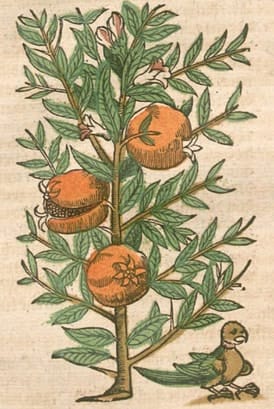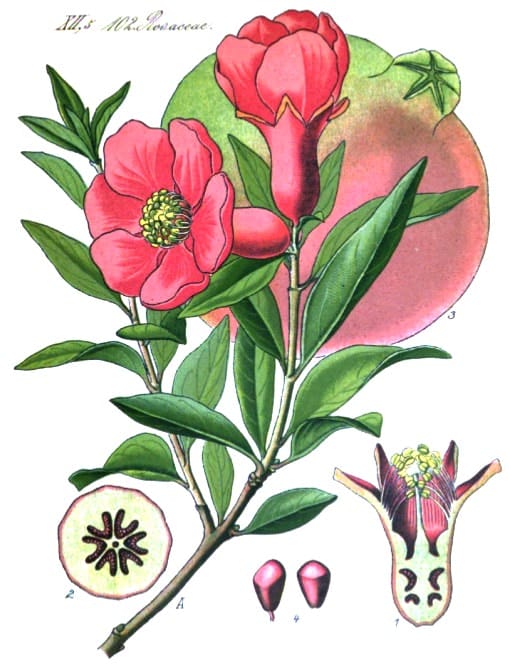Punica Cortex, Pomegranate Bark
Post Bekh e Anar (Unani) Krauterbuch, Lonitzer, 1578
Krauterbuch, Lonitzer, 1578 Flora von Deutschland (25), Kohler, 1886
Flora von Deutschland (25), Kohler, 1886Botanical name:
Punica granatum
Parts used:
Bark, especially Root-Bark
Temperature & Taste:
Cool, dry.
Classification:
3Q. ANTHELMINTIC
Uses:
1. Kills Worms:
-Tape-, Round-, and Pin-worms and Ascaris
-this is the primary action of the Bark
2. Astringes to Stop Leakage:
-similarly to the Rind; Diarrhea and Dysentery with Blood etc. (West, Ayurveda)
-sometimes to astringe Essence and promote Fertility
Comment:
1. The primary functions of the Pomegranate are its drying, Astringent effects due to tannins throughout the plant (dried rind and root-bark, around 25-28%, leaf 11%). Primarily used for Diarrhea and Dysentery, with or without Blood as well as other forms of Leakage.
2. Anthelmintic effects are found in the Root-bark and Fruit Rind with the Bark being stronger.
Dose:
Powder: 1–3 grams

Main Combinations:
1. Diarrhea with Blood, Pomegranate bark, Holarrhena, mixed with Honey (Ayurveda, Ashtanga Hridaya)
2. Tapeworm, Pomegranate root-bark (2 oz. fresh), boil in a pint and a half of water down to half. When cool give a wineglassful every half hour until all is taken. ‘This dose sometimes sickens the stomach a little, but seldom fails to destroy the worm, which is soon after passed‘. (Vegetable Materia Medica of Western India, Dymock, 1885)
Major Compounds:
Powder for Moist and Hollow Ulcers
Electuary Against Sterility (Nicholas)
Electuary of Seseli (Nicholas)
Cautions:
Not used in excess Heat or Fevers
